8 Tips for Fighting Bonefish Out Of Mangroves

By Louis Cahill
When you hook a big bonefish in the mangroves, you only get one shot at landing him.
Half the reason we target bonefish is that they are such powerful fighters. A relatively modest bone can put you in your backing several times during a fight. That’s reason enough to love them, but when you’re faced with big tides and the big fish they bring to the flats, you can get in trouble in a hurry. When you hook that big fish on the edge of the mangroves, you’d better know what to do.
I’ve seen a lot of anglers miss their chance in this scenario, either breaking fish off immediately or losing them in the mangroves. Bonefish are too powerful to simply beat in a game of force. You have to fight them hard to be sure, but you also have to fight smart. There is a window of opportunity and if you exploit it you can land those tough fish that might seem hopeless.
HERE ARE 8 TIPS FOR FIGHTING BONEFISH OUT OF MANGROVES.
Lead the fish to open water
Often when fishing around mangroves you are presenting the fly into openings in the structure. Places where you can intercept a fish who is working among the roots of the brush. Your best chance at landing a fish in this situation is to lead him out of cover. If the fish moves aggressively on your fly, you can strip it quickly enough to lead him into the open before he eats. This is a huge advantage.
Have a plan and act fast
Once the fish eats your fly, your window of opportunity opens and it isn’t open for long. It takes a second for any fish to figure out that he’s hooked. After all, he’s expecting a meal, not a fight. You can use that split second to set the tone of the argument, and there are two things you need to accomplish quickly.
Raise the head
You need to raise the fish’s head. This is key. If the fish gets in a ‘tail up’ orientation, you’re done. He’s rigged for towing and you will not beat him. Remember, fish have
Read More »Dead or Alive

by: Landon Mayer
On many Colorado tailwaters, such as the Fryingpan, Blue, or Taylor, a good Mysis pattern is money.
With so many Mysis shrimp patterns on the market, finding the best one can be problematic. Many lack the movement and color of the natural crustaceans. You need movement from the fly that imitates the natural movement of both live shrimp and dead shrimp. Similar to scuds, shrimp especially those that are alive will extend and move horizontally in the water.
My Mysis is designed on a 200R hook to mimic the natural’s length in its profile, and the white ostrich herl on the thorax imitates the active legs of the real shrimp. I tie the antennae out of clear dady long legs that wiggle while the current moves the fly. These materials are extremely supple to maximize movement of the fly in water both fast and slow. In addition to matching movement, you want a fly that can match the translucent look of a Mysis that is alive and the opaque color of one that is dead. I prefer to match live shrimp, knowing this is the version most commonly seen by trout and it is a whole meal.
Mysis are commonly released below different tail water dams, or swept downstream from the vegetation on the river bottom. In high flow the live shrimp have a chance to drift downstream while remaining alive, possessing a translucent appearance. In low water many of the shrimp trout see are dead and torn apart from their previous high water journey. These shrimp are opaque with crippled bodies. An effective but ugly pattern in this situation is a Candy Cane shrimp size 14-18. Before each adventure to these high protein fisheries, check flow to match the food supply accordingly.
Mayer’s Mysis
Hook: TMC 200R or 2302 #14-20
Thread: 8/0 White UNI
Abdomen: Pearlescent Hairline flat tinsel (Large)
Thorax: White Ostrich Herl (Large)
Antennae: Hareline Clear Dady Long Legs
Eyes: Permanent Marker black/red
WATCH THE VIDEO AND LEARN TO TIE MAYER’S MYSIS
Read More »Tie Twice the Flies in Half the Time
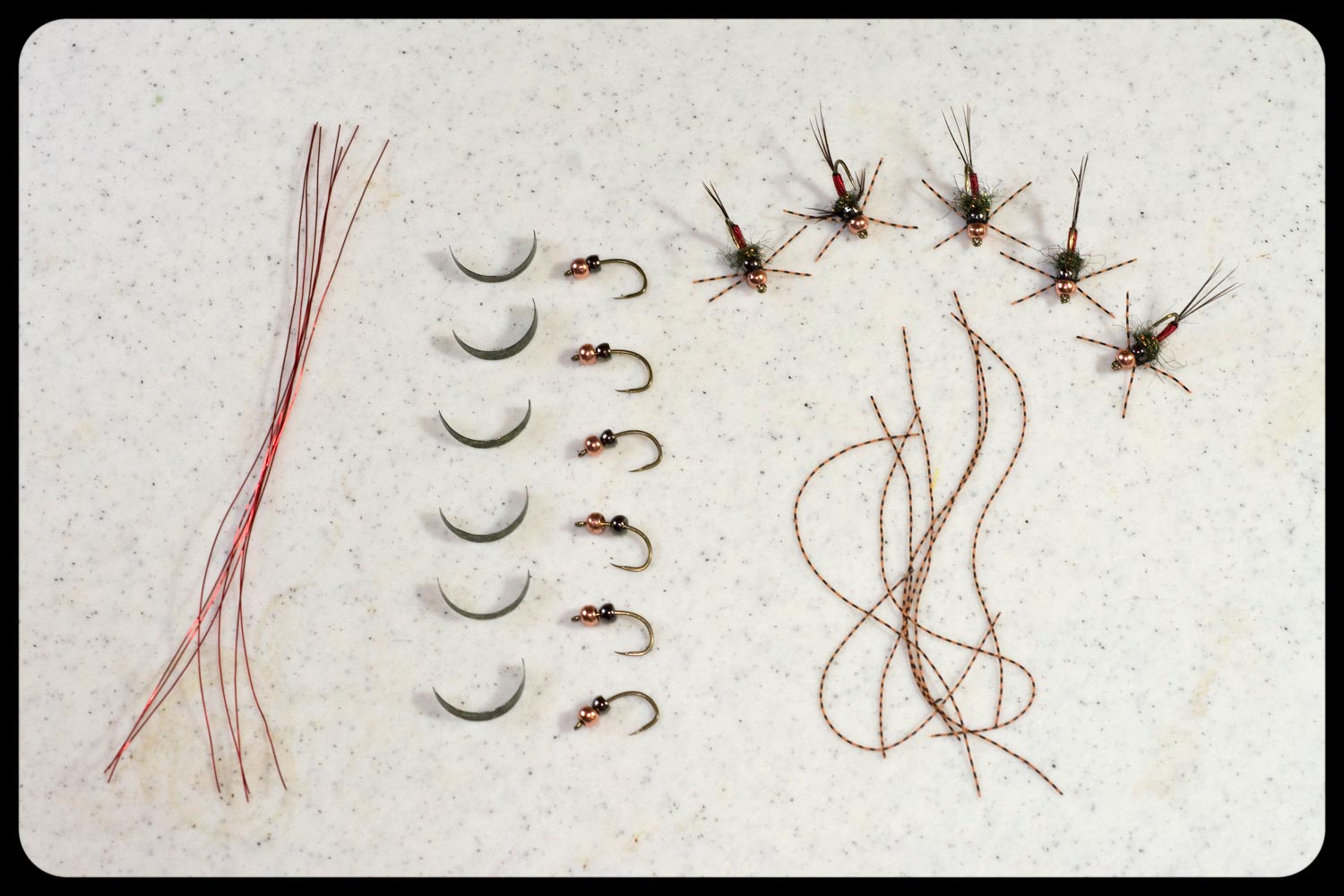
If you tie flies and you’re looking for a way to increase your fly output, I’ve got a great fly tying tip for you today.
I personally don’t have the luxury of extra time on my hands these days with running two companies and managing my family time. When my fly boxes start getting bare, I have to restock them as fast as possible. For years, I’ve been an advanced fly tier but I’ve never been one of those guys who can rip out a dozen flies in thirty minutes. I take that back, I can bust out a dozen san juan worms in thirty minutes, but that goes for most of us. For more complex fly patterns, it can be very beneficial to us if we take the time to get organized prior to wrapping the thread on the hook.
Read More »The Virtues of a Sidearm Cast in Saltwater Fly Fishing

SOMETIMES YOU’VE GOT TO COME AT A PROBLEM FROM A DIFFERENT ANGLE.
I’m a sidearm caster by nature. I think it’s in my DNA. I threw a baseball sidearm when I was a kid and I’ve cast a fly rod that way for as long as I can remember. It was a necessity on the streams where I learned to trout fish. Under the heavy canopy of trees and mountain laurel you find in the southeast, it’s the only effective way to reach the fish and keep your flies. I literally had to teach myself to cast overhead for situations where it’s a better technique but my sideways cast has served me well in the salt.
Here are a couple of reasons that I feel a sidearm cast is superior for saltwater fly fishing.
It’s one of the most effective ways to deal with wind. Wind is not a uniform movement of air. There is a turbulent zone near the water that moves slower. The higher your line is off the water, the stronger a wind it travels in. Keeping your line close to the water takes advantage of the turbulent zone to make for easier casting. The sidearm cast also allows you to straighten your line closer to the water, within the turbulent zone. This means your fly is not as likely to be blown off target by the wind.
In a moderate wind, off your casting shoulder, a sidearm cast uses the length of the rod to keep your fly at a safe distance. If your line speed is high enough you can manage this in a surprisingly stout wind. The sidearm cast is also an important component of the Belgian cast. This cast will handle even stronger winds.
In addition to fighting the wind, a sidearm cast is less likely to spook fish. You can cast slightly off angle and work out line without the fish seeing your line in the air, or its shadow on the water. This extra stealth makes a big difference with spooky saltwater species.
The sidearm cast also makes
Read More »How hard is your guide working for you?
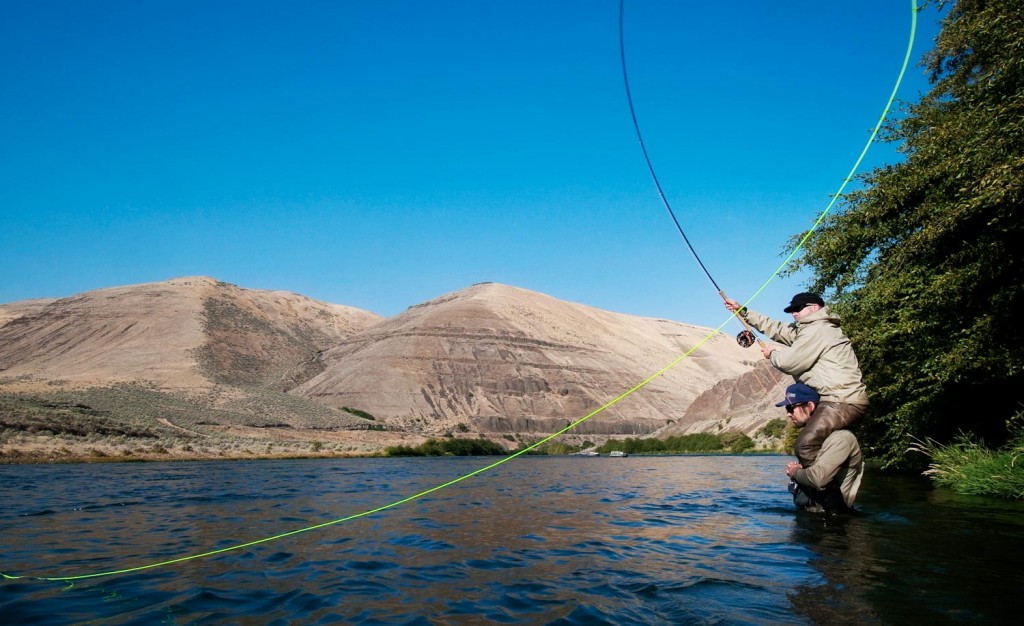
A GOOD GUIDE WILL DO JUST ABOUT ANYTHING TO PUT THEIR CLIENT ON FISH, BUT DAMN!
Jeff Hickman ran into a little problem while guiding Nate DeVol on the Deschutes River in Oregon. Jeff put Nate on a sweet run where he’d been finding steelhead. A great run for Jeff (6’4″) but a good swim for Nate (5’3″). Rather than give up on a good run Jeff went “Master Blaster” putting Nate on his shoulders and waded the run for him.
It was the damnedest thing I’ve ever seen a guide do and I can’t believe no one took a bath. The Deschutes can be a tough wade without a guy on your shoulders. According to Jeff it wasn’t too bad, except for that angry Chap Stick Nate was carrying in his pocket.
I wish Nate had gotten a fish because that would be an awesome hero shot. Can somebody please nominate this man for guide of the year?
If you’ve got a good story about something crazy a guide did for you, or you did for a client, please post a comment. We’d love to hear it.
Read More »Fishsicles
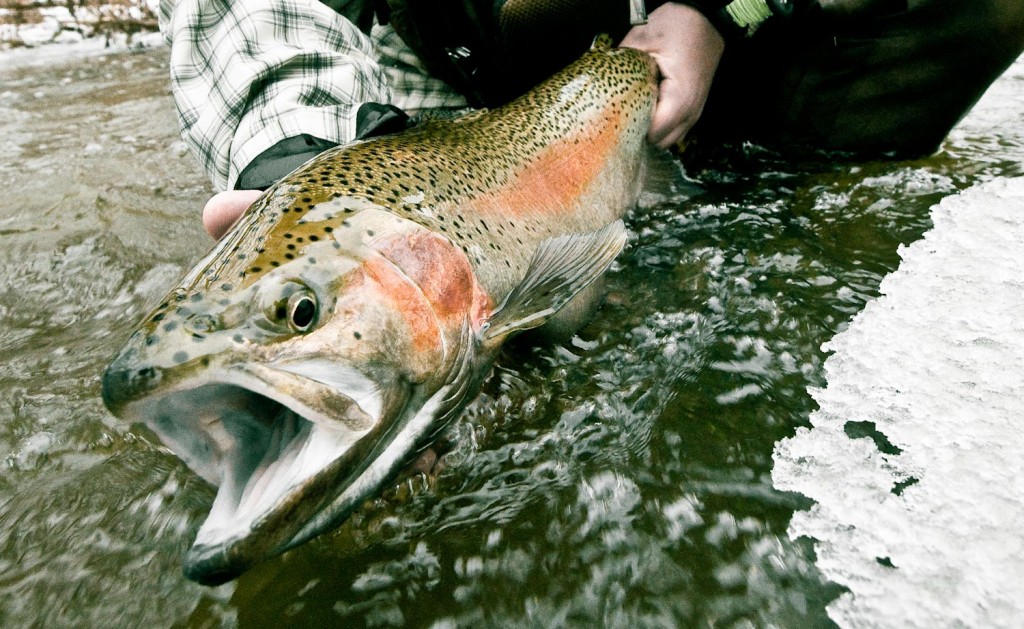
Kent’s eight weight is bent double, the big steelhead finally within range of the net.
We’re in a tough spot. This fish has taken us downstream as far as we can go. We’re backed up against a bridge with a deep hole on one side and a concrete wall on the other. Kent has managed to bring this big fish back upstream and whatever happens is going to happen here and now. The temperature is about zero and the wind is howling. My numb fingers grip the net and I lean forward, waiting for my shot. The fish’s head comes up and I scoop. Holy crap it’s a big fish! Less than half the fish is in the net and I’m losing him. Only one thing to do, I plunge my right hand into the water and tail the fish. He’s landed but my fleece glove is soaked. We manage the fish and I get a few photos but my right hand, now out of the glove, feels like it’s on fire. By the time I get my glove out of my pocket it’s a block of ice. If I hadn’t brought a second pair my day would be over. I’d have frostbite in minutes without a glove on that wet hand.
OK, that’s a happy ending. We landed the fish and I had spare gloves, but let’s look at it from the fishes perspective. The fish is like that bare hand. He’s wet and exposed, out in that cold wind. What’s worse is that a fish is cold blooded. He doesn’t have an internal source of heat like I do. The only thing keeping him warm is that water. Have you ever noticed how fast your guides freeze over on a day like that? That fish has little more internal heat than your rod and out of the water he is going to freeze too. The air is an alien environment for a fish. When you lift him from the water he can’t breath and starts gasping. What he doesn’t know is that he is now exposing his fragile gills to deadly subfreezing temperatures. If those gills freeze, he’s dead and you won’t see it happen. He’ll swim off like he’s fine and slowly suffocate because his injured gills can’t process enough oxygen.
Everybody wants to land that big fish and everybody wants a photo with him, but please be careful and treat him with respect. Keep that fish in the water while you figure out your exposure and camera angle. Have everything
Read More »The V Grip Haul
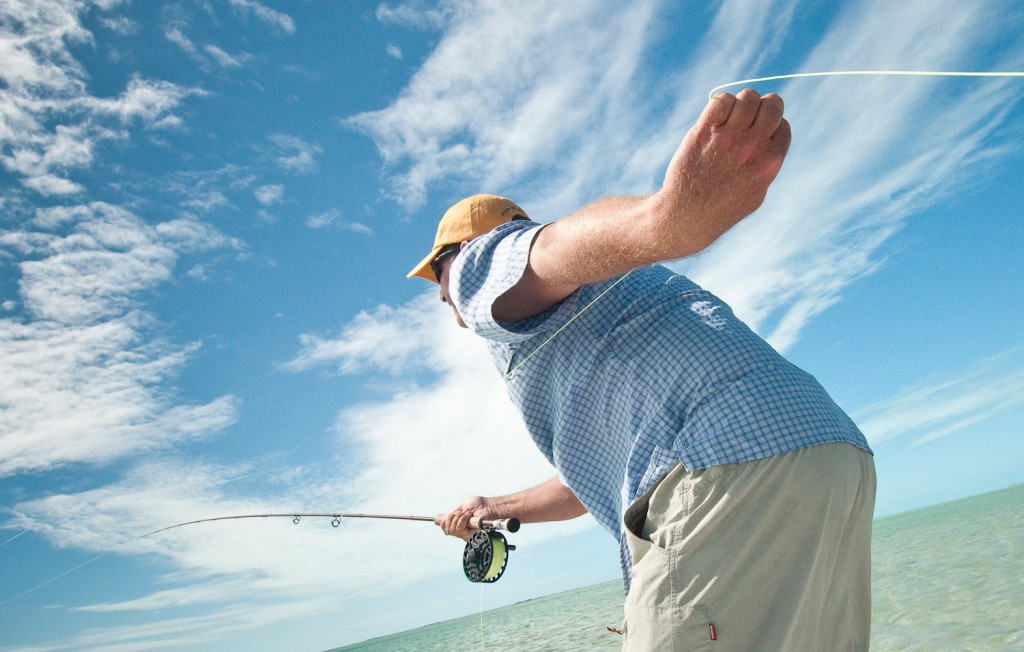
IN THE LAST VIDEO OF OUR ULTIMATE LINE SPEED SERIES BRUCE IS GOING TO TURBO CHARGE YOUR DOUBLE HAUL BY APPLYING THE “V GRIP” TO YOUR LINE HAND.
Again, this is seriously advanced technique and it’s going to take practice. However, if you can master and employ all the techniques from the last five videos together you will cast like a rock star and the wind will be your bitch. Now, doesn’t that sound nice? I hope this video series has been helpful. I look forward to seeing the hero shots of all those salt water fish you’re going to catch!
Check out the video!
Read More »Don’t Go Fishing Without Your Bullets
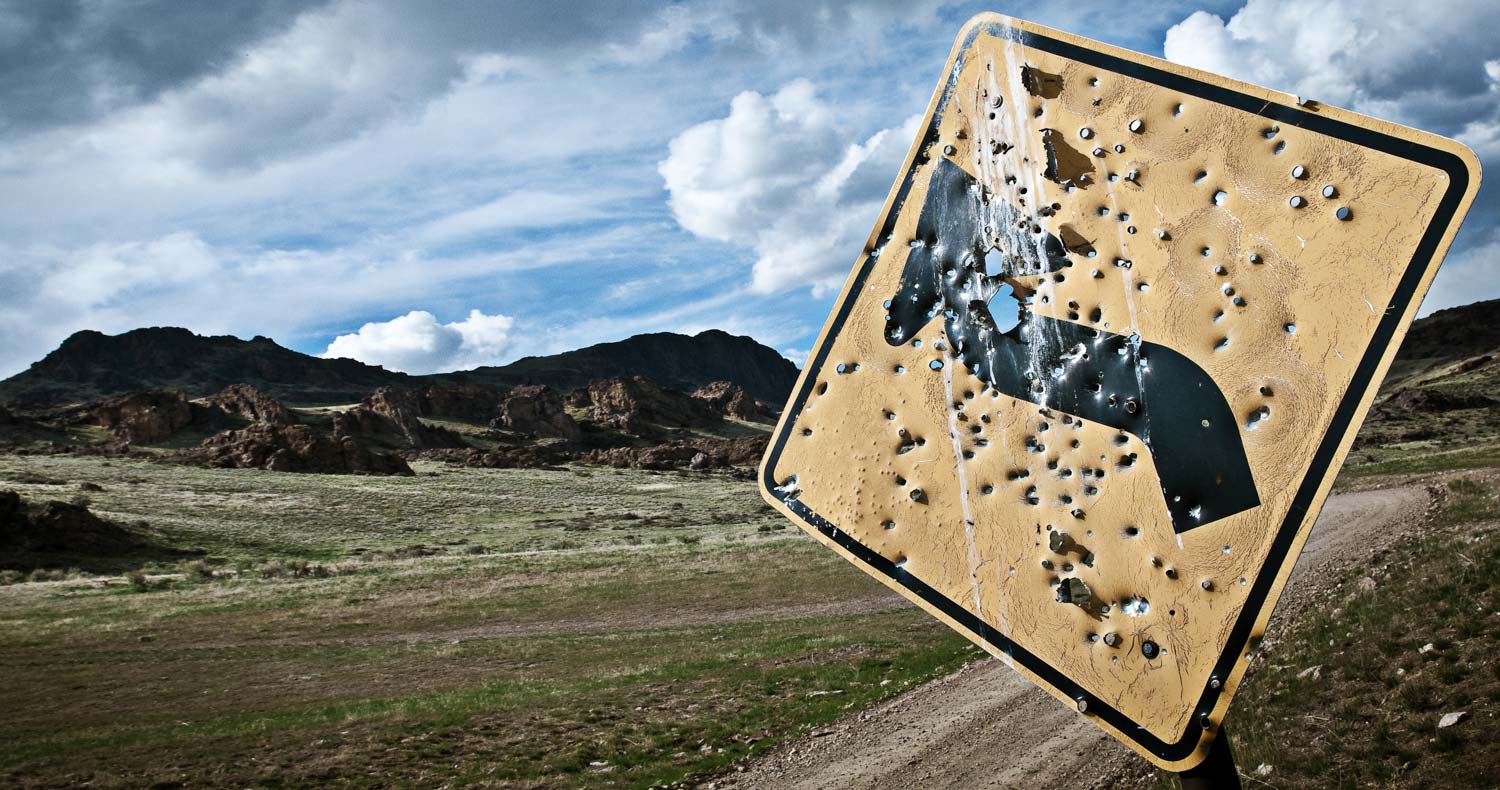
By Louis Cahill
Air rifle pellets make cheap and effective weights for fly-fishing.
The thing I love about fly fishing is, there is always something to learn. I would have never thought of this simple fly fishing life-hack if I hadn’t fished in Argentina. Imported fishing gear is crazy expensive in many places overseas. The idea, that started as a money saver, actually has some performance benefits as well.
The idea is simple. Use the needle on your nippers to punch a hole in the nose of an air rifle pellet, then slip your leader through and retie. There is no chance of the weight falling off, or damaging your leader, like split shot can. Lots of anglers do this with cone heads, made for fly tying, but pellets are a fraction of the cost and work just as well. Personally, I like the idea of using lead and knowing it isn’t going to fall off in the river.
You can use the weight directly on the nose of the fly, with streamers for example, or place it above a blood knot anywhere on your leader. You can even use several at different points on your leader to sink the heavy butt section, which is effective for deep-water nymphing. You can use .22 cal for heavy weight or .177 cal for lighter weight.
Pellets have gotten fancy since I was a kid. There are a lot of different types on the market now. I feel like the closer you
Read More »It’s OK To Stay Home

By Justin Pickett
SOME DAYS, IT’S NOT HAPPENING.
Up at the wee hours of the morning, Tim Harden, of the Venturing Angler, and I, hit the road en route to meet up with our guide, Capt. David Accursio, for another day of fishing in the Everglades. Excited to hit the water, we hadn’t even considered to check the weather. After all, it’s Florida and it’s summer time, so there is always a chance of rain and we were prepared for that.
We arrived to the meetup spot early with David arrive a few minutes later. Soon after our morning’s greetings, David brought up the weather and how things had been looking on the radar. Not Good. A string of storms were building just southeast of the keys, and while they seemed to be tracking west of where we would be fishing, things could certainly change. With that knowledge on board, we decided to make the drive out to Flamingo and give it our best shot. After all, you don’t know unless you try. Right?
And we did just that. On the drive out we constantly checked the weather. Keeping tabs on every single storm cell and how it was building. As David backed the boat down the ramp and prepared the boat for launch, a huge bolt of lightning split the sky over the bay. Without a word said, I think we all made the decision in that moment to get back in the truck and abort our fishing plans. This was the right decision to make. Not three minutes later, the rain was so heavy that you could barely see out into the bay and the lightning was striking all around us. We certainly avoided what could have been a dangerous situation.
We sat in the truck for about an hour going over scenarios concerning what the weather could do, or might do, but we all know Mother Nature has her own plans and there isn’t one damn thing you can do about it. She definitely laughed at our optimism that morning as we sat there hoping for just a window of opportunity to get the boat wet. After realizing there was no hope for hitting the water, and about fed up with being eaten by voracious pterodactyls (David called them mosquitos), we decided to bug out and take it to the house.
It’s never easy admitting defeat. Even when it’s something you have zero control over, like the weather. When you travel so far to fish a place as awesome as the Everglades, you want nothing but to be on the water enjoying every possible opportunity to fish amongst the creeks, flats, and mangroves that dominate this waterscape. When it comes
Read More »Deadly Ice Off Duo
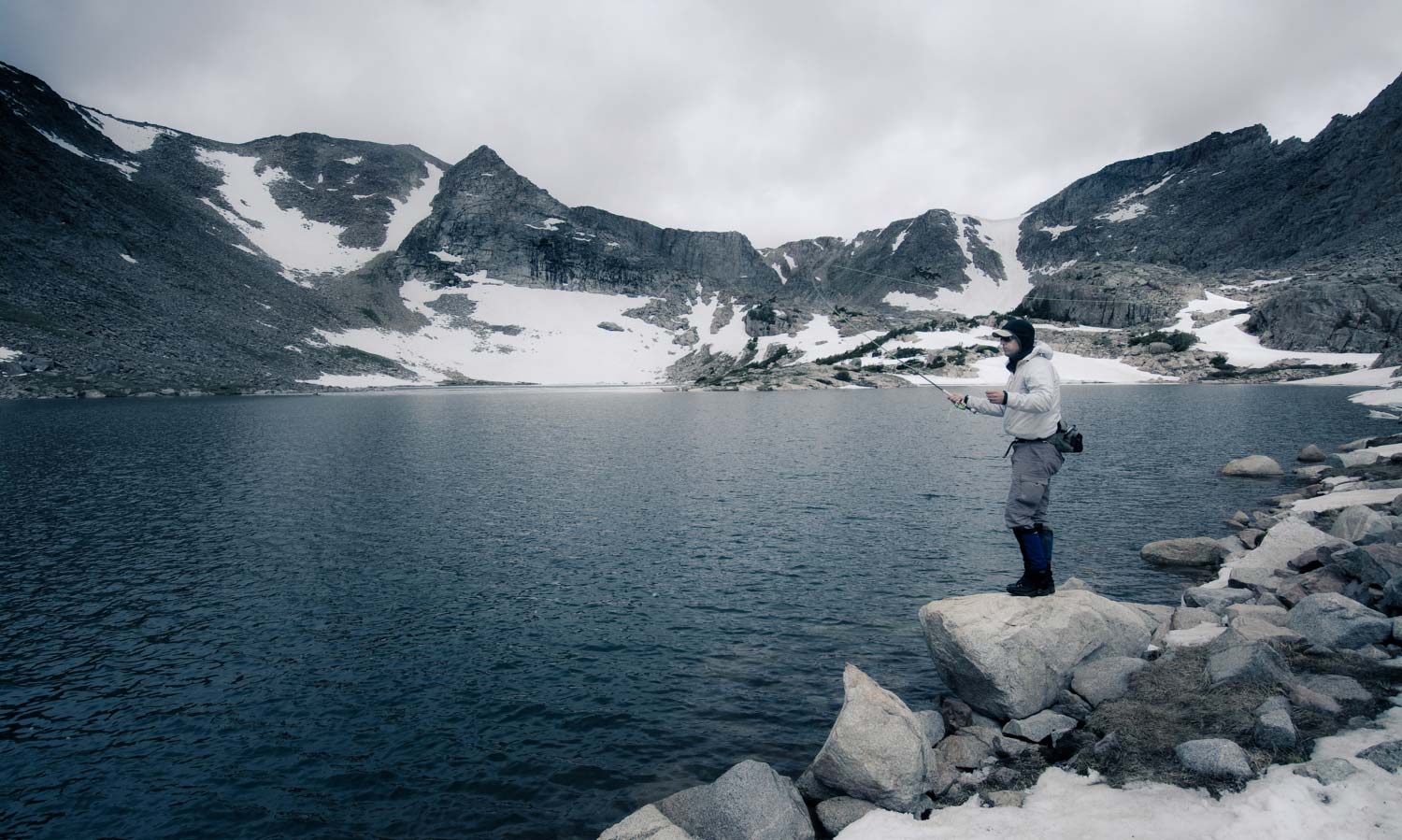
By Bob Reece
Ice off on lakes in the Rocky Mountain region can be dynamic.
It can also be extremely challenging. Tim Drummond’s extensive knowledge of still water scenarios led to his creation of two highly effective still water patterns. These two patterns have a proven track record and can help crack the code to Ice Off success.
Tim has worked professionally as a guide for well over a decade in Northern Colorado. His experience with both moving and still waters has led to a dialed in understanding of these aquatic environments. I’ve known Tim for several years and was able to ask him about his thoughts behind the creation of his Chromie and Water Boatman patterns.
“My Water Boatman was originally tied to imitate the abundant boatman we see here on the Delany Buttes lakes and other stillwaters. The fly is tied with a metallic plastic bead versus a metal bead because I did not want the fly to sink fast, only gradually. Water boatman are divers going from the surface to just below the surface as they move across the water. This fly is best fished on an intermediate line just below the surface with a slow retrieve or hand twist retrieve. I have had the most success with this fly in the spring and fall when boatman are active. Sight casting to a cruising fish is how I have hooked most of my big fish on the boatman. The fly can also
Read More »